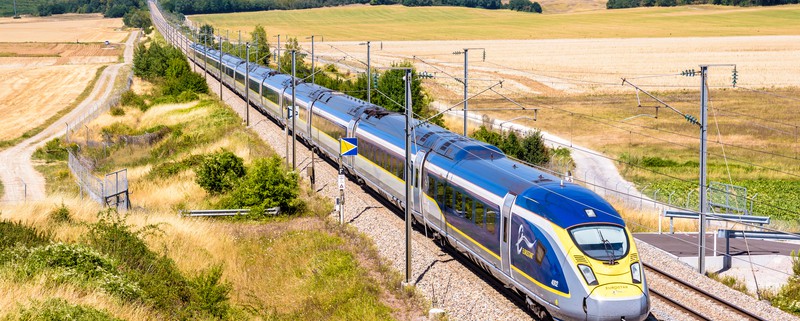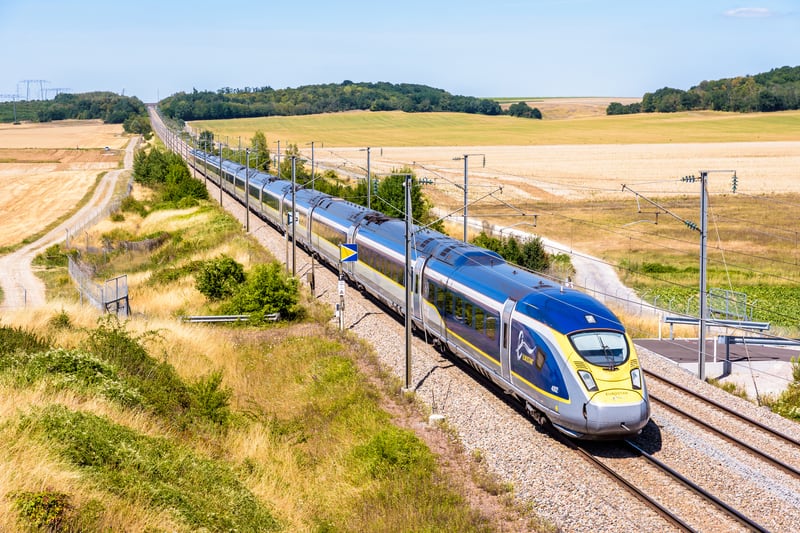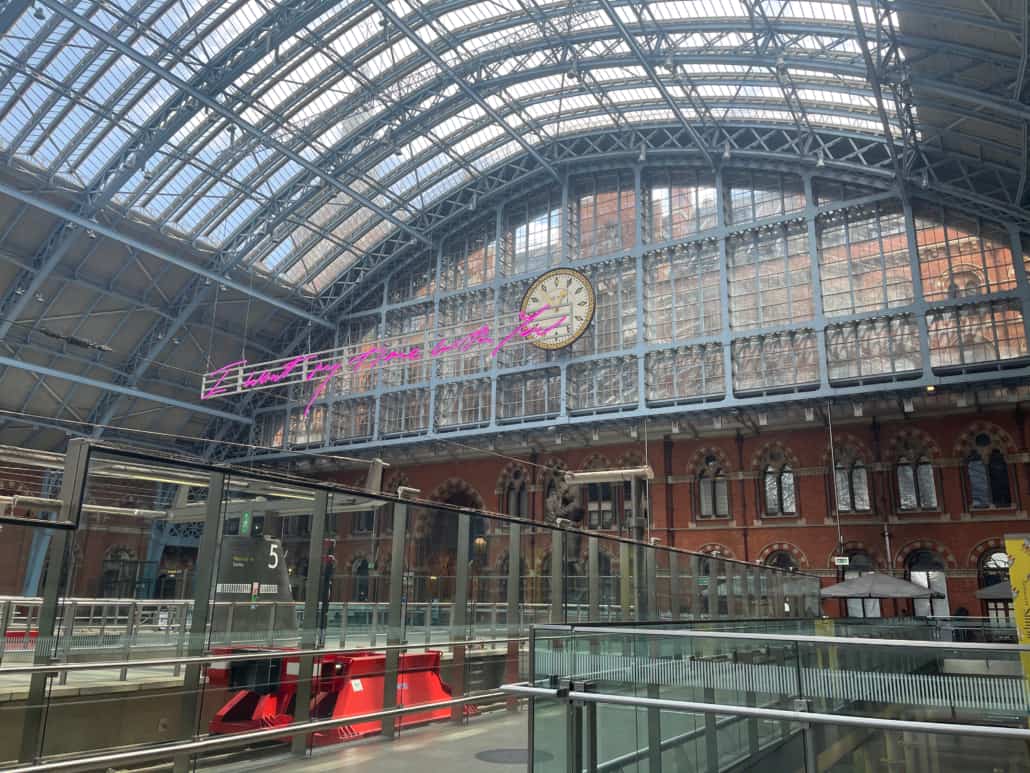Latest press coverage on Croatia round-up: early May edition!
As we get closer and closer to summer, there has recently been a whole flurry of press articles and coverage on Croatia and – let’s face it – that’s no surprise. So here I take a look at some of the latest press coverage on Croatia from early May. (And not a mention of Eurovision in sight!)
Enjoying the new train from Italy to Croatia
Just yesterday, the Sunday Times Travel section wrote about the reintroduction of a train service that runs from near Trieste in Italy via Slovenia to Rijeka in Croatia. (Something that was first brought to our attention a number of months ago by our contributor John – see his latest post on The Sound of Rijeka.)
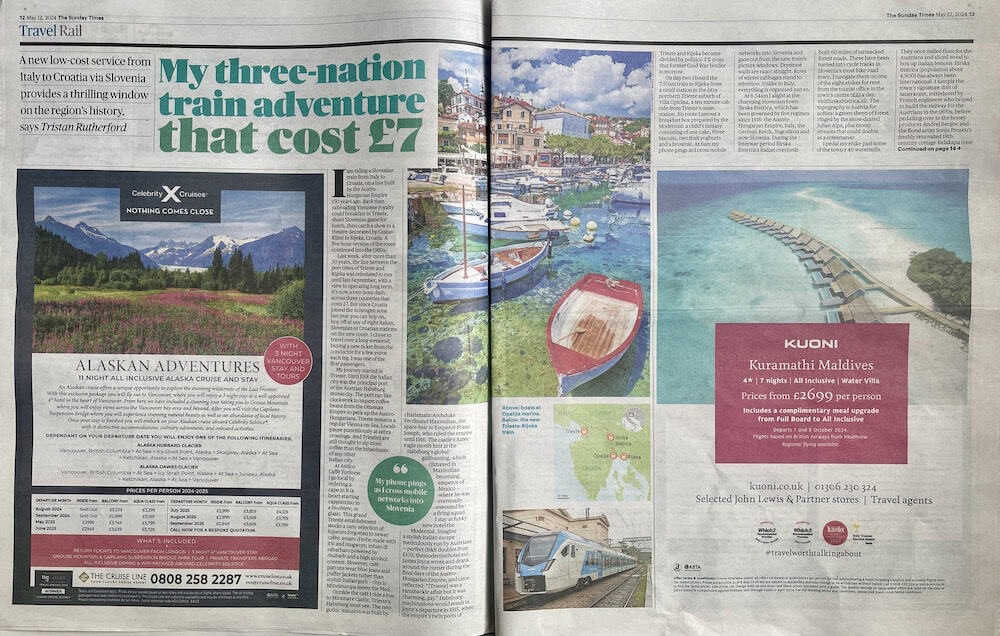

Accompanied by some rather lovely shots as you can see (of Croatia…of course!), the main premise of the article is that for just a few Euros, you can use this new train route to explore a number of the little but charming towns in Italy and Slovenia along the way. The writer does just that; he states that the whole two-hour journey costs the equivalent of £7, but he chooses to purchase a new train ticket (costing just a few Euros each time) for each leg of the journey.
After enjoying Trieste itself, his first stop is the Slovenian town of Ilirska Bistrica where he enjoys exploring on an e-bike on some of the 60 miles of forest cycle tracks. Food is the order of the day here two, with sauerkraut, Slovenian sheep cheese and multiple varieties of honey all sampled.
Next, it’s on to Croatia and the fabulous Opatija. The article’s author, Tristan, gets his bearings by walking the seaside promenade route, the lungomare, enjoying the scents and scenery. “This is Croatia’s answer to Capri or Cannes”, he declares.
After a night in Opatija it’s on to Rijeka the next on the same train – this last leg is just a 10-minute journey. Rijeka is certainly talked up here, and the author enjoys a number of sights (such as the Sugar Palace) as well as the fish market.
Rijeka’s seafront railway station looks like a Habsburg wedding cake, built to impose. I arrive to witness a marathon, an outdoor jazz festival and a superyacht leaving port. Trieste’s twin brother is buzzing.
Tristan Rutherford, The Sunday Times, 12th May 2024
You can read the article online: One train, three countries and a £7 ticket: Europe’s newest rail trip.
Tipping culture – in Europe and in Croatia
Elsewhere in the same paper, there’s an interesting article on “How to tip in Europe”. I bet I’m not the only one who gets a little anxious about tipping on holiday; I don’t want to seem rude, but also don’t want to throw down too many notes and coins that make me seem like a crazy person. (Or someone with more money than sense.)
The overall conclusion for Croatia is that tipping is “casual” and 10% is certainly welcome in restaurants but not always expected. In smaller venues such as cafes, tipping is merely rounding up to the nearest Euro.
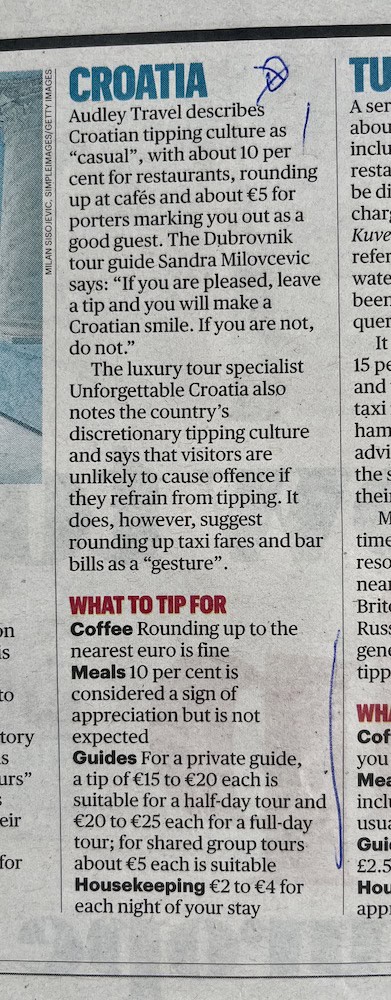
The joys of Istria
An absolute gem of a piece this month is one from National Geographic on Istria. I haven’t yet been able to check if it appears in print in the magazine, but if it does I’m sure it looks fantastic.
The article really takes a deep dive into some of the traditional and cultural aspects of Istria, the most northerly of the Croatian coastline. Focusing first on the region’s main city, Pula, and its spectacular 2,000-year-old Roman amphitheatre The Arena, the piece also features the Brijuni Islands, Vodnjan and beautiful Rovinj.
There’s an extensive look at Istrian folk music with the author Daniel witnessing a performance in Pula by singers, musicians and dancers all dressed in traditional costume. In Vodnjan, too, he’s able to see another folk performance of songs performed in Istroveneto, an Istrian language influenced by the Venetian dialect.
I had listened to some Istrian folk music on YouTube before my trip. Woodwind instruments wrapped around dual voices, improvising in the microtonal way Dario had described. To ears like mine, used to a rigid system of tones and semitones, the constant use of microtones can sound dissonant or harsh. That much was evident from the video’s comment section, where one rather ungenerous observer had suggested the music sounded like “someone stepping on a cat”.
Daniel Stables, National Geographic, 2nd May 2024
Read it online: On Croatia’s Istrian peninsula, age-old traditions are securing locals’ futures.
Bargains on the Croatian Islands
The Daily Telegraph this weekend had an interesting piece on “The 50 greatest bargains in travel”. Who doesn’t love a bargain, am I right? But how does Croatia fit into this?
Well, Croatia is featured under the “Discount destinations” heading – or, more specifically, the Croatian islands are. And even more specifically, the more southern islands of Mljet and Korcula. The Daily Telegraph advises that if you’re the kind of traveller who likes to book their own holiday, you’ll “…find it hard to beat the value offered by the Croatian islands“.
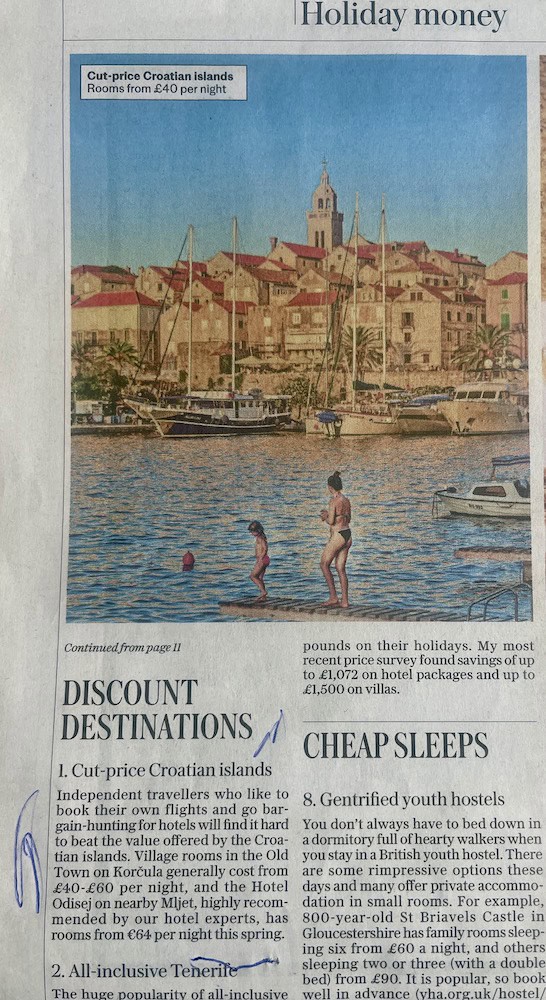
I couldn’t find this article online, but get some inspiration with our How to do Croatia on a budget post!
If this isn’t enough press coverage on Croatia…
…there really has been plenty more in the papers and online over the past few weeks!
If you don’t yet know anything about holidaying in Croatia, you should first read the Visit Croatia website and then secondly take a look at Elle magazine’s Ultimate Croatia Travel Guide.
Follow that up with The Time’s guide to 13 of the best places to visit in Croatia which features many of the most well-known places in the country and some not so well known too.
And if “not-well-known” is totally your kind of thing, The Independent recently featured a piece on 6 lesser-known Croatia destinations you may not have considered.
All of the above makes up plenty of reading on Croatia for you so go on – off you go to get started!


